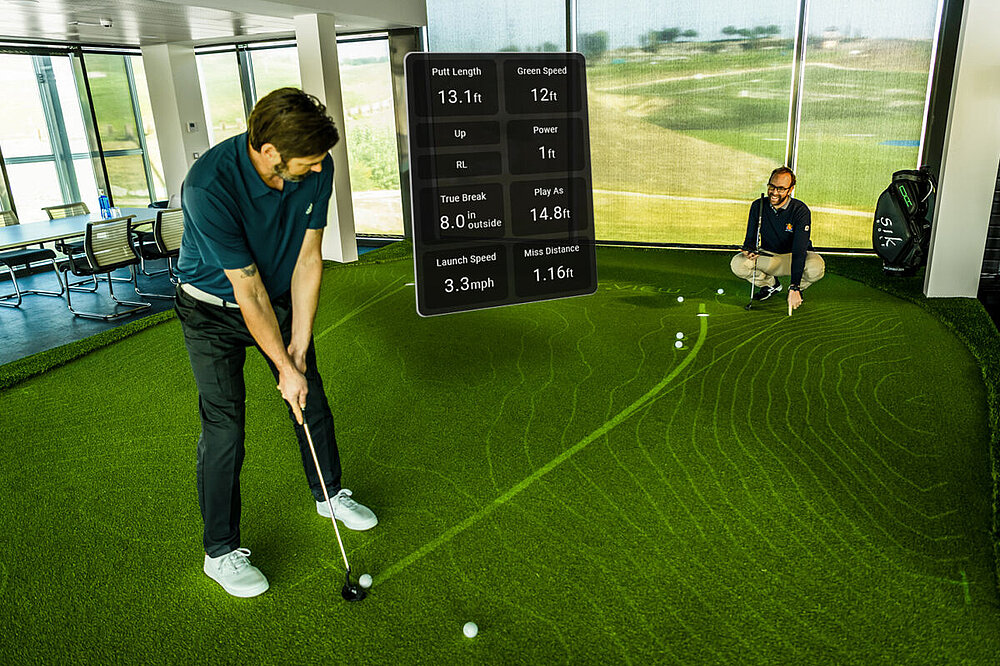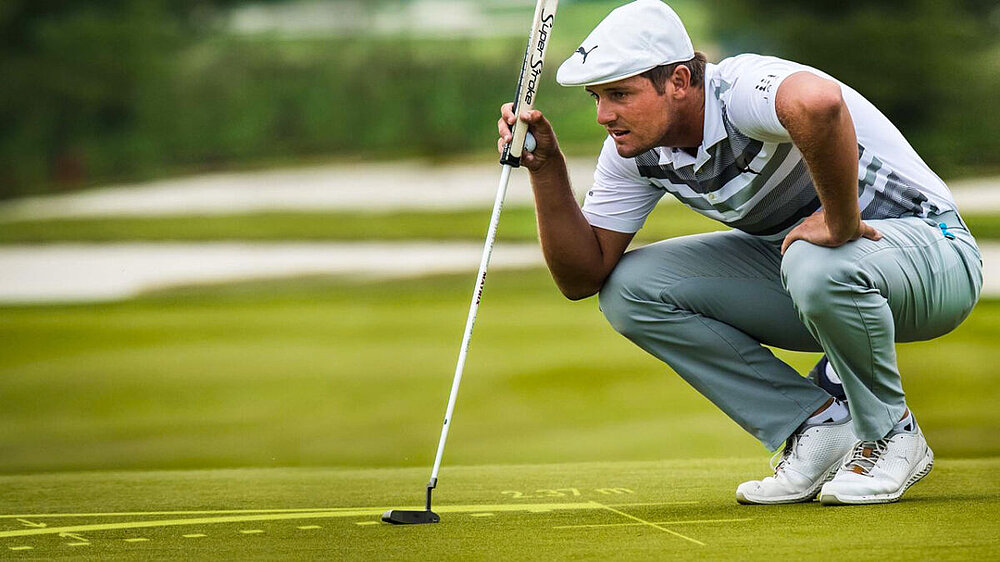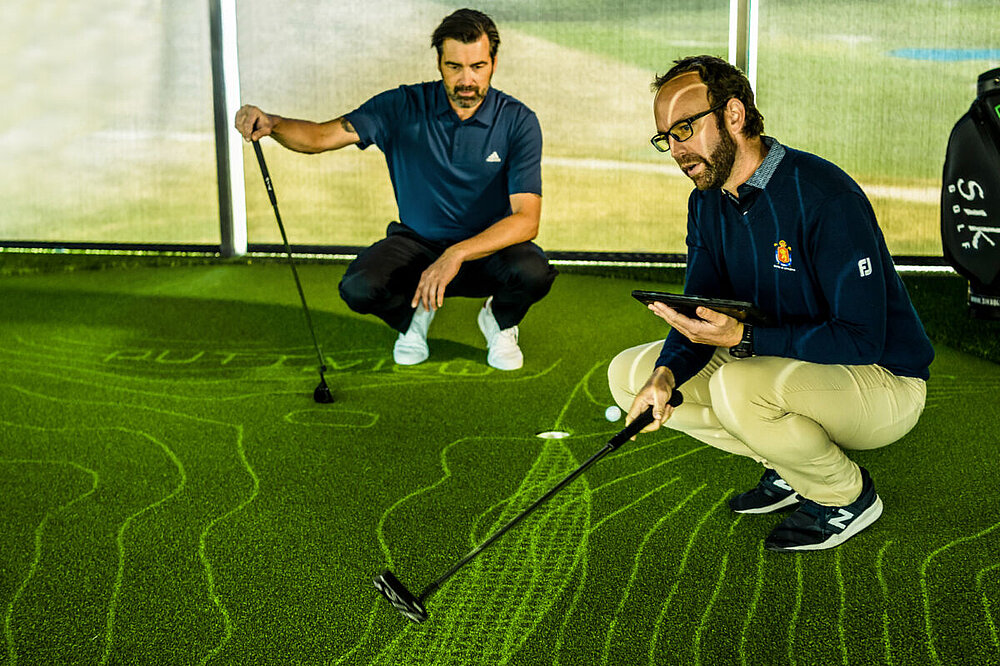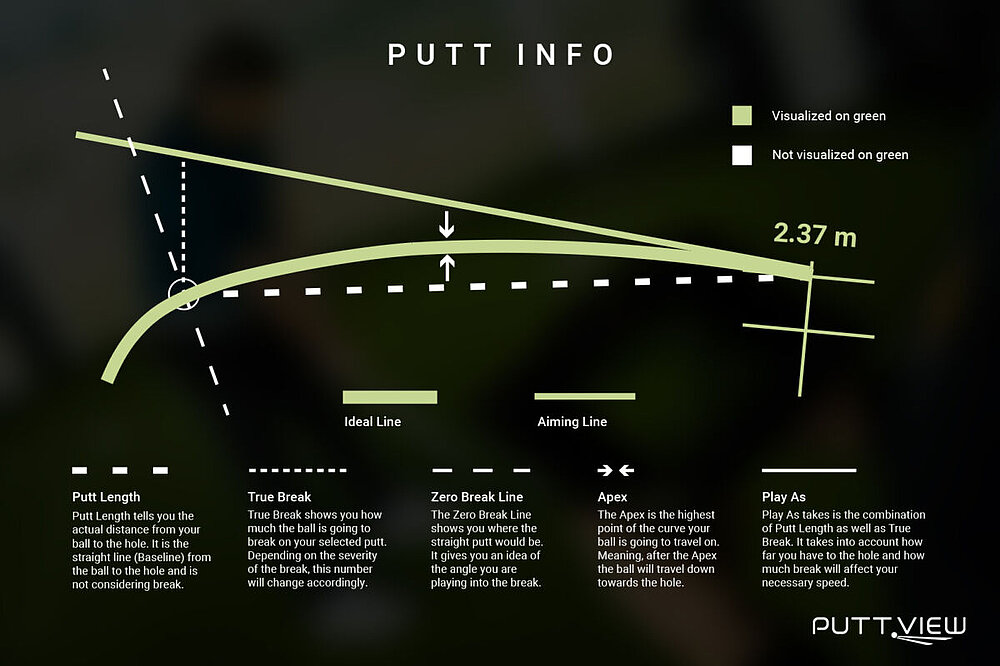Your Trackman for putting


When booking a golf lesson students expect certain things from their pro. Part of that expectation is having access to their own data. Long gone are the days when only professional players knew what Club Path, Ball Speed, Angle of Attack, etc. mean and what their metrics with each of these data points. Yet, neither students nor coaches chase too much data and knowledge when it comes to putting. Time to change that, now!
The goal of every coach or trainer is to unlock their student’s full potential and get them to perform to the best of their abilities. But the question is how to do that and how do you know what that means? Let’s start with the latter question by looking at the best of the game. Every pro athlete at the top of their respective sport gives us a glimpse of what is possible and the various ways to get as close to perfection as possible. Those athletes spent countless hours, months, and years to become the best. And the way they do it is by turning every corner and every stone to find something that gives them that little extra edge to overcome their competitors. While the individual approach might differ in every athlete, or in our case golfer, it all comes down to analyzing and monitoring as much performance data as possible. Take for example US Open winner Matthew Fitzpatrick, who allegedly keeps track of every single shot he ever hit since the age of 16 or Bryson DeChambeau who famously turned golf into some type of science. Those data points make their performance comparable, comprehensible, and therefore immensely valuable. Players like them are also the reason why we now cannot imagine a world without having access both on TV and during a golf lesson to data provided by Trackman, GC Quad, ShotLink, etc. In conjunction with a coach, students gain insight into their own abilities, as well as infallible baselines which make their progress measurable and most importantly visible. I will go out on a limb here and say if asked, no coach in this world would voluntarily give up their Trackman or GC Quad because of the added value it brings to their lessons.

Do you need putting data?
The biggest added value that technology brings to coaches is, that it makes their lives easier. Instead of having to rely on the student’s ability to feel and comprehend what is being said, the coach can now prove and show the figures that need to be changed for real progress. For some reason, however, technology has not yet fully reached putting. One of the only areas in the game of golf where there are no physical restrictions keeping you from being just as good as the pros on tour. What is happening to the ball on the green is plain physics and can be replicated by any golfer. This also means the information is calculable. Obviously, there is technology around that is designed to improve your putting, however, the problem with most of those devices is, that they focus mainly on the swing and the way the ball leaves the club face. They seldomly take into account what else is happening between impact and the time the ball goes into the hole. Of course, it is possible to improve your swing and the roll of your ball, but that does not solve the problem of getting the ball to the hole. There are simply too many other factors that come into play that are not considered.
But why is the focus so much on roll rather than on the actual stroke? Well, most golfers and even coaches have never seen a “real” putt in front of them. They might have seen projected putts on the telecast from the PGA Tour or in replays, but they have never seen a putt in front of them where they infallible knew which task is ahead of them. I am talking speed options, ideal line, aiming point, etc. So, how would a coach know how to efficiently teach those factors? The simple answer is they can’t. They would have to start out by getting a better understanding of a putt themselves and follow that up by giving their students a way to visualize their putts the exact same way. Luckily, there is a device that does exactly that. With PuttView, coaches can do the exact same thing they have been doing with Trackman or GC Quad and this is giving the student data to support the teaching point.

PuttView projects every parameter of the putt onto the green and therefore provides the student with a visual representation of what the putt ahead of them will do. No more guessing and no more talking around about what can’t be seen. Depending on the teaching point of the lesson, coaches can even focus on specific areas of putting such as read, line, and speed and amend the visuals accordingly. This is something that simply isn’t possible during regular lessons because it is an impossible task to detangle those factors without the help of technology. At least not reliably.
But what about the putting stroke or the roll of the ball? Isn’t it just as neglecting to leave those factors out of the equation, as it is the other way around? The overly simple answer is no. While stroke and ball roll undoubtedly play a role in the outcome of the putt, they are not the main determining factors of whether a putt will go into the hole or not. As is the case with a full swing as well, it is all about being as consistent as possible. Whatever that means for each individual student. If they manage to start their ball on their intended line with their stroke and that line is matched with the correct speed for the putt, the ball will go into the hole. No matter what. Consistency obviously can come from a reliable and repeatable stroke, yet most amateurs struggle way more with green reading, picking the correct line, and speed control than the work that would need to be done on their strokes. Showing students the actual path of the ball on PuttView will help them improve their putting intuitively and the real-time Ball Tracking underlines a good putt or gives insights into possible sources of errors. This way, during a lesson, the coach can focus on helping the student gain an understanding of what is being said, rather than teaching something unfathomable to them.
Giving students a reliable data source will greatly improve their putting as well as their satisfaction with their lesson. Most of the time students are reluctant to book specific putting lessons because they don’t understand the benefit of them. They believe that putting comes down to guessing and luck. And they are not wrong for the most part because without technology that is exactly what is being taught to them. As mentioned above, this doesn’t have to be the case. Everything that is happening on the green can be calculated and there shouldn’t be any guessing involved. Just like with a Trackman or a GC Quad which are trusted devices for almost any coach out there, PuttView will help increase the value of any putting lesson and should not be missing in the putting practice of the future. Because, as we have learned from the best of the game: Only if you are willing to look under every rock out there, will you be able to get the best possible performance out of you. So why not use the data that is readily available to finally unlock the students’ full potential on the greens as well.